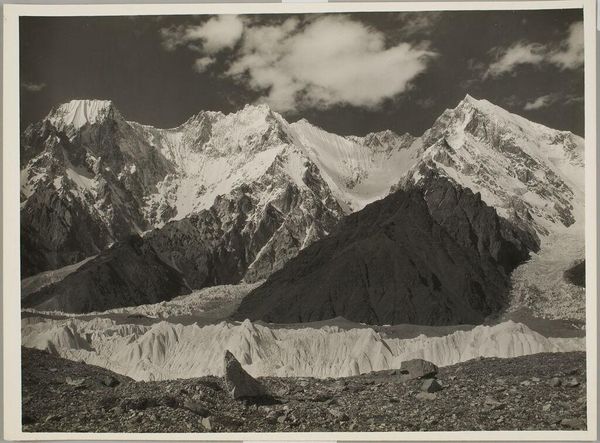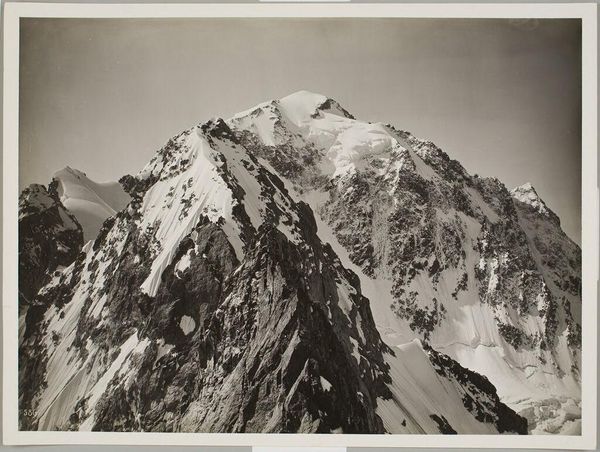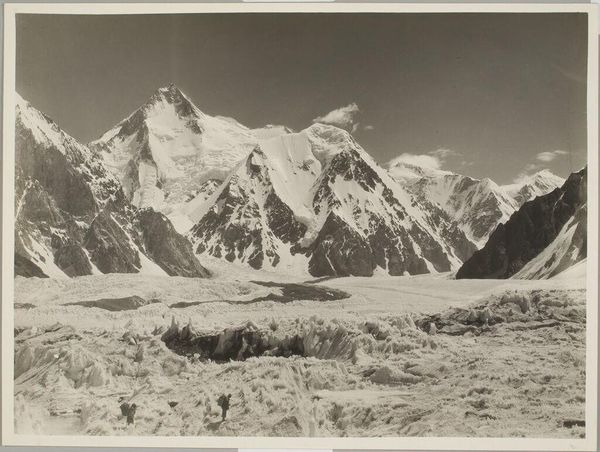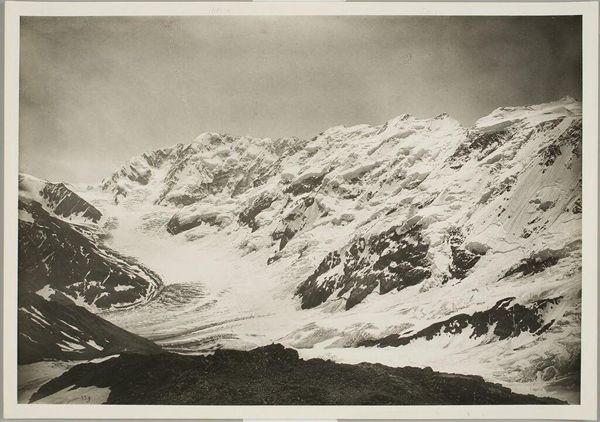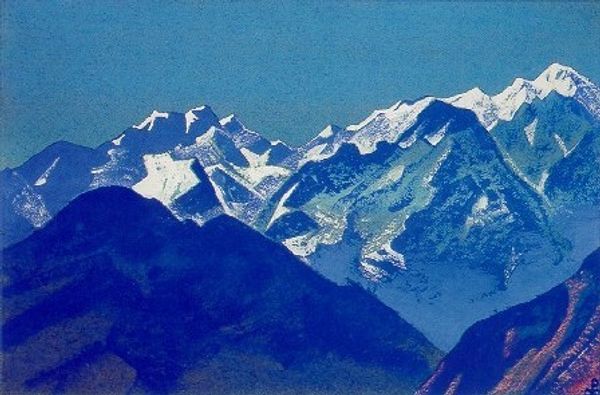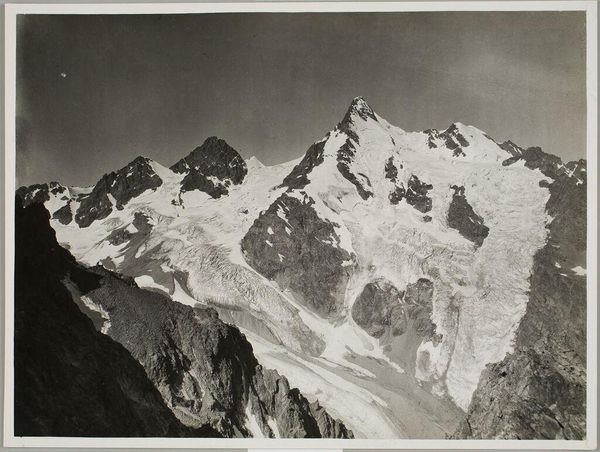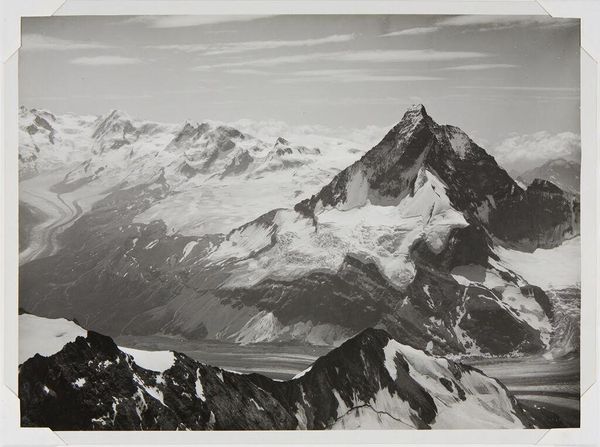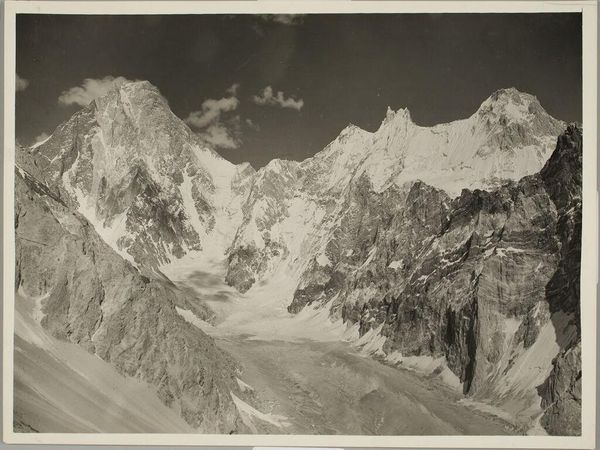
Dimensions: image: 860 x 1284 mm
Copyright: © Richard Long | CC-BY-NC-ND 4.0 DEED, Photo: Tate
Editor: Richard Long's "A Line in the Himalayas," presents us with a striking scene. It's a photograph, yet it feels like more than just documentation. How do you interpret this intervention within such a monumental landscape? Curator: The single line becomes a potent symbol. Consider the Himalayas, deeply interwoven with spiritual traditions and challenging to scale. Long's line, almost ephemeral, echoes humanity's enduring desire to leave its mark, to connect with something greater than itself. Editor: So, the line isn't just about physical presence, but also about aspiration? Curator: Precisely. It's a quiet gesture against the backdrop of imposing nature. The line is a cultural artifact, yet also naturally becoming part of the mountain. We can view this line as a visual expression of the cultural memory of our human desire to make our mark on the world. Editor: That gives me a lot to think about. Thanks. Curator: My pleasure. It's the interplay of nature and human intervention that makes it so compelling.
Comments
tate 6 months ago
⋮
http://www.tate.org.uk/art/artworks/long-a-line-in-the-himalayas-t12035
Join the conversation
Join millions of artists and users on Artera today and experience the ultimate creative platform.
tate 6 months ago
⋮
Since the 1960s Long has based his art on the action of walking in the natural landscape. He later extended this practice to creating sculptures using materials found in these landscapes, whether at the site itself or in the gallery. A Line in the Himalayas is one of several works that resulted from a walk in the Nepalese Himalayas that Long made in 1975. The photograph records a line of white stones arranged by the artist, which stretch towards the mountain peaks in the distance. Gallery label, April 2009
